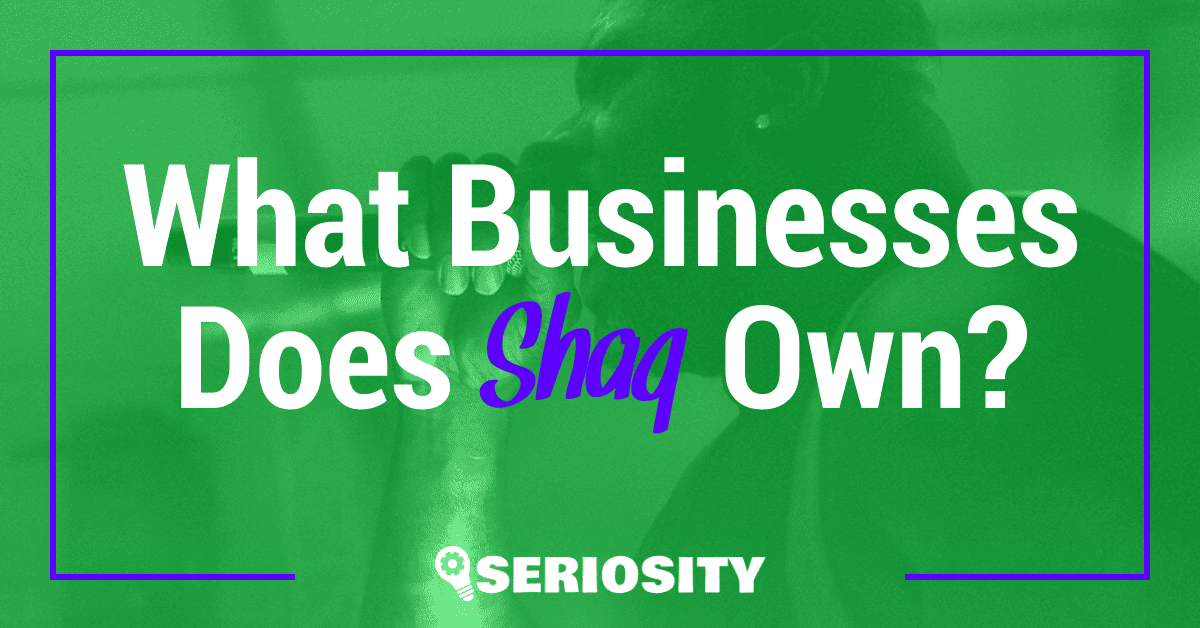You’ve poured your heart and soul into your small business, and now it’s time to ensure you’re getting paid what you’re worth. Commanding premium prices isn’t just about slapping a higher price tag on your products or services; it’s about conveying value and building a brand that customers believe in.

Imagine your clients eagerly paying top dollar because they see your offerings as unparalleled. By focusing on quality, exceptional customer experiences, and strategic marketing, you can transform your business into a premium brand. Ready to elevate your pricing game? Let’s dive into some proven strategies that’ll help you confidently set those premium prices and watch your business thrive.
Key Takeaways
- Understand Premium Pricing: Successfully commanding premium prices involves emphasizing value and setting your brand apart through superior quality, exceptional customer experiences, and strategic marketing.
- Know Your Market: Identify key demographic segments and customer needs, understand competitor positioning, and focus on high-value customers who are willing to pay more for unique offerings.
- Enhance Quality: Invest in superior materials and skilled labor, maintain rigorous quality control, and continuously improve based on customer feedback to justify premium prices.
- Build a Strong Brand Identity: Develop a compelling and consistent brand identity with a memorable logo, unique brand voice, and clear mission and vision to boost credibility and make a strong impression.
- Leverage Customer Perception: Foster a positive brand perception through consistency, showcasing social proof like testimonials and reviews, and creating a sense of exclusivity with special deals or limited editions.
- Use Strategic Pricing Techniques: Implement value-based pricing by highlighting the perceived value of your offerings, understand competitor pricing, and tailor your prices accordingly to position your brand advantageously.
Understanding Premium Pricing
Commanding premium prices can set your small business apart in a competitive market. It’s about conveying value and meeting high customer expectations.
What Is Premium Pricing?
Premium pricing involves setting higher prices for goods or services compared to competitors. This strategy leverages perceived value, exclusivity, and brand prestige to attract customers willing to pay more for superior experiences. Luxury brands like Rolex and Tesla exemplify premium pricing by showcasing exceptional quality and innovation.
Why Consider Premium Pricing for Your Small Business?
Premium pricing can boost your profit margins, positioning your offerings as high-end. This strategy fosters brand loyalty as customers associate your business with exclusivity and superior value. Additionally, premium pricing enables you to invest more in product development, enhanced services, and marketing initiatives. If you provide outstanding quality, unique features, or unparalleled customer service, premium pricing will elevate your business and ensure customers recognize the worth of your offerings.
Setting the Stage for Premium Prices
Commanding premium prices starts with laying a strong foundation that emphasizes value, trust, and uniqueness.
Know Your Market
Understanding your market sets the stage for premium pricing. Identify key demographics and customer needs to gauge their willingness to pay more. Study competitors, but focus on what makes your business unique. Depth over breadth helps sharpen your focus on the highest-value customers. Once you pinpoint your target, tailor your offerings to match their expectations.
Enhancing Product or Service Quality
Boosting product or service quality justifies premium prices. Use superior materials and skilled labor to create something exceptional. Invest in continuous improvement to keep your offerings ahead of the curve. Ensure rigorous quality control to maintain consistency. It’s also vital to gather and act on customer feedback; show that you listen and adapt based on their needs. High standards set you apart from the competition and solidify your position as a premium brand.
Effective Branding Strategies
Developing effective branding strategies is crucial for commanding premium prices for your small business. Here are some tips on how to do it.
Building a Strong Brand Identity
Creating a compelling brand identity helps your business stand out. A well-defined brand boosts credibility and makes a strong first impression.
- Logo and Design: Use a memorable logo and consistent design across all channels. Think of iconic logos like Apple’s or Nike’s.
- Brand Voice: Establish a unique voice that reflects your brand’s personality. This can be formal, casual, or somewhere in between.
- Mission and Vision: Define what your business stands for and where it’s headed. Share these with your audience to create a deeper connection.
Leveraging Customer Perception
How customers perceive your brand significantly affects your ability to command premium prices. Focus on shaping a positive and distinguished perception.
- Consistency: Maintain consistency in quality, service, and communication. Inconsistencies can dilute your brand’s perceived value.
- Social Proof: Highlight customer testimonials, reviews, and case studies. These elements build trust and validate your brand’s premium status.
- Exclusivity: Offer exclusive deals, memberships, or limited editions. Exclusivity creates a sense of value and urgency among customers.
Building a strong brand identity and leveraging customer perception work hand-in-hand to justify premium prices and differentiate your business in a competitive market.
Strategic Pricing Techniques
Pricing strategies can greatly affect how your business is perceived. Let’s dive into some techniques that will help you command premium prices.
Competitor Analysis
Understand your competitors and their pricing strategies. Notice both the features they offer and their pricing tiers. For instance, if a competitor charges $100 for a premium package, compare it to your cost structures. Evaluate what they include in their offerings and identify gaps. Highlight those gaps to differentiate yourself. By understanding their weaknesses and strengths, you can position your prices strategically above, below, or on par with competitors.
Value-Based Pricing Explained
Value-based pricing focuses on the perceived value of your product or service. Instead of simply calculating costs and adding a markup, you gauge what customers are willing to pay. Let’s say you offer a software tool that saves businesses 10 hours of work weekly. If that translates to $500 in productivity savings, you can price your tool closer to that perceived value, perhaps at $200-$300, instead of basing it purely on cost.
This technique emphasizes the benefits and improvements your product provides, making it easier to justify the premium price. Highlight unique features, outcomes, and experiences to draw attention to the value your product delivers.
Marketing Tactics to Support Higher Prices
Setting higher prices often requires a well-planned marketing strategy. By crafting the right message and using effective channels, your small business can attract a premium audience willing to pay for quality and exclusivity.
Crafting the Right Message
Your messaging needs to align with the premium nature of your products or services. Here’s how to do that:
- Emphasize Quality: Highlight the superior quality of your offerings. Mention unique materials, craftsmanship, or processes. For instance, if you sell handmade furniture, you could emphasize the use of sustainable wood and expert craftsmanship.
- Showcase Benefits: Focus on the benefits your customers will enjoy. Describe how your product or service will improve their lives. For instance, if you offer a luxury skincare line, highlight its effectiveness and the premium ingredients used.
- Use Social Proof: Share testimonials from satisfied customers to build credibility. Positive reviews and case studies can reinforce the high value of your products or services. For example, sharing a success story of a customer who benefited greatly from your premium consulting service can boost your reputation.
Channels to Reach Your Premium Audience
Choosing the right channels ensures your message reaches those willing to pay more. Here are a few effective strategies:
- Social Media Platforms: Focus on platforms where your target audience is most active. Platforms like Instagram and LinkedIn are known for their professional and higher-income demographics. Share engaging content that resonates with their lifestyle and values.
- Email Marketing: Use personalized email campaigns to nurture relationships with potential and existing customers. Offer exclusive deals, early access to new products, or VIP events. This approach fosters a sense of exclusivity and loyalty.
- Content Marketing: Create high-quality blog posts, videos, and infographics that showcase your expertise and the value of your products. For example, if you run a premium fitness brand, share workout tips, success stories, and expert advice on maintaining a healthy lifestyle.
Using these tactics strategically positions your business as a premium brand, making it easier to command higher prices and attract customers who value quality and exclusivity.
Conclusion
Commanding premium prices for your small business is all about showcasing the unique value you offer. By focusing on quality, exceptional customer experiences, and strategic marketing, you can position your brand as a premium choice in the market. Remember, it’s not just about the price tag but the perceived value and exclusivity you bring to your customers.
Effective branding and consistent messaging play crucial roles in justifying higher prices. Leverage social proof and maintain a compelling brand identity to build trust and loyalty. Utilize strategic pricing techniques like competitor analysis and value-based pricing to highlight your strengths and differentiate yourself.
Ultimately, attracting customers who appreciate quality and are willing to pay for superior experiences will help you stand out. Embrace these strategies, and you’ll find that commanding premium prices is not only achievable but also beneficial for your business’s growth and success.
Frequently Asked Questions
What is premium pricing?
Premium pricing is a strategy where businesses set higher prices for their products or services to differentiate themselves in the market. This approach emphasizes the perceived value, exclusivity, and superior quality, attracting customers willing to pay more for these benefits.
How can small businesses command premium prices?
Small businesses can command premium prices by focusing on delivering exceptional quality, providing outstanding customer experiences, and building a trusted brand. Strategic marketing, emphasizing value, and maintaining consistency in branding also play key roles.
Why is branding important for premium pricing?
Branding is crucial for premium pricing because it helps create a compelling identity that customers trust and value. A strong brand with a clear mission, vision, and unique design elements can justify higher prices by highlighting the superior benefits and exclusivity of the offerings.
What role does customer perception play in premium pricing?
Customer perception is vital in premium pricing as it influences the perceived value of a product or service. Businesses can leverage social proof, maintain consistency, and offer exclusivity to enhance customer perception, making it easier to justify higher prices.
How can competitor analysis help in strategic pricing?
Competitor analysis helps businesses understand their market positioning by analyzing competitors’ offerings and pricing tiers. This knowledge allows businesses to identify gaps, emphasize their unique value, and strategically set prices to stand out.
What is value-based pricing?
Value-based pricing is a strategy where prices are set based on the perceived value and benefits a product or service provides, rather than solely on costs. This approach aligns pricing with customer expectations and the improvements offered, making it easier to justify premium prices.
What marketing tactics support higher prices?
Marketing tactics that support higher prices include emphasizing quality, showcasing product benefits, leveraging social proof, and choosing effective channels like social media, email marketing, and content marketing. Crafting the right message that aligns with the premium nature of the offerings is essential.
How does strategic marketing help position a business as a premium brand?
Strategic marketing helps in positioning a business as a premium brand by effectively communicating the superior quality, uniqueness, and value of the offerings. Tactics like highlighting customer testimonials, creating compelling content, and targeting a premium audience play significant roles.















